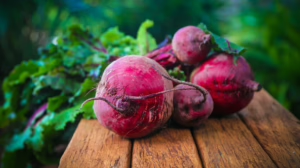Colorful Plates, Happy Kids: The Power of Fruits and Veggies
Introduction
In today’s fast-paced world, where convenience often takes precedence over nutrition, fostering healthy eating habits in children is more critical than ever. An effective way to engage kids in a nutritious lifestyle is through the vibrant, colorful world of fruits and vegetables. The simple act of filling a plate with an array of colors can not only make a meal visually appealing but also promote health and well-being in children. This article explores the power of fruits and vegetables, emphasizing their nutritional benefits, the psychological impact of colorful presentation, and strategies for making them a staple in children’s diets.
The Nutritional Benefits of Fruits and Vegetables
Fruits and vegetables are essential components of a balanced diet. Packed with vitamins, minerals, fiber, and antioxidants, they play a crucial role in maintaining good health. Let’s delve into some of the key benefits these colorful foods provide.
Rich in Nutrients
Fruits and vegetables are an excellent source of essential nutrients. For instance:
-
Vitamin C: Found in oranges, strawberries, and bell peppers, this vitamin boosts the immune system and aids in the absorption of iron.
-
Fiber: Present in apples, carrots, and beans, fiber helps improve digestion and prevent constipation.
- Antioxidants: Blueberries, spinach, and tomatoes contain antioxidants that protect the body from oxidative stress and reduce the risk of chronic diseases.
The diverse nutrient profile of fruits and vegetables can help children grow, develop, and thrive, making them indispensable for their health[^1].
Weight Management
Regular consumption of fruits and vegetables can aid in weight management. Due to their high water and fiber content, these foods are low in calories but can keep children feeling full and satisfied. Research indicates that children who eat more fruits and vegetables are less likely to be overweight or obese[^2]. By promoting healthy weight management, parents can help mitigate the risks associated with obesity-related conditions such as diabetes and heart disease.
Disease Prevention
Fruits and vegetables contribute to long-term health by reducing the risk of various diseases. Studies have shown that a diet rich in colorful produce can lower the incidence of heart disease, stroke, and certain types of cancer[^3]. The antioxidants in fruits and vegetables help prevent cellular damage, while their anti-inflammatory properties support overall health.
The Psychological Impact of Colorful Presentation
When it comes to food, presentation matters. Research has demonstrated that children are more likely to eat fruits and vegetables when they are presented in an appealing, colorful manner[^4]. Here’s how colorful plates can influence children’s perceptions and behaviors around healthy eating:
Visual Appeal
Children are naturally attracted to bright colors. An arrangement of fruits and vegetables that showcases a spectrum of colors can stimulate their interest and curiosity about food. The vibrant hues of red strawberries, orange carrots, and green broccoli create a feast for the eyes that can entice children to try new things[^5].
Building Positive Associations
Making meals visually appealing can help cultivate positive associations with healthy foods. When parents encourage children to create colorful plates, they’re not just providing nutrition; they’re creating an enjoyable experience around food. Encouraging creativity—by arranging the food into fun shapes or characters—can further enhance this experience, making healthy foods seem exciting rather than bland[^6].
Empowering Choice
Allowing children to participate in choosing and preparing colorful fruits and vegetables can empower them. When kids have a say in what goes on their plates, they are more likely to feel invested in the food they are eating. This approach can lead to increased acceptance and willingness to try new fruits and vegetables[^7].
Strategies for Incorporating Fruits and Vegetables into Kids’ Diets
Encouraging children to embrace fruits and vegetables can be a rewarding experience for families. Here are some effective strategies to ensure that colorful plates become the norm at mealtime.
1. Make It a Family Activity
Involving the whole family in meal preparation can make eating fruits and vegetables a fun, shared experience. Whether it’s picking fresh produce at a local farm or cooking together at home, engaging children in the process can foster a sense of ownership of their food choices. Family meals that feature colorful fruits and veggies can also strengthen family bonds and create lasting memories[^8].
2. Create a Rainbow Chart
Using a visual chart to track fruit and vegetable consumption can motivate children to try a variety of foods. Parents can encourage kids to eat foods of different colors each day, challenging them to "eat the rainbow." This can be an interactive and educational experience, as children learn about the nutritional benefits associated with different colored produce[^9].
3. Set an Example
Children often mimic the behaviors of their parents. By making fruits and vegetables a regular part of your diet, you’re setting a powerful example. Share your enthusiasm for colorful produce, and express the benefits you experience from eating a variety of fruits and vegetables. This modeling encourages children to adopt similar habits[^10].
4. Sneak Them In
If kids are resistant to trying fruits and vegetables, consider sneaking them into their favorite dishes. Adding spinach to smoothies, mixing grated carrots into spaghetti sauce, or incorporating pureed vegetables into baked goods can increase nutrient intake without compromising taste[^11].
5. Make Healthy Dips
Dips can make fruits and vegetables more appealing. Encourage kids to enjoy carrot sticks with hummus, apple slices with peanut butter, or bell peppers with yogurt-based dressing. These combinations can enhance flavor while adding an extra element of fun to eating healthy foods[^12].
Overcoming Common Barriers
While the benefits of fruits and vegetables are undeniable, many parents face challenges when it comes to getting their children to eat them. Addressing these barriers can lead to a healthier diet for kids.
1. Picky Eaters
Picky eating is a common obstacle in many households. To help children expand their palates, it’s important to offer a variety of fruits and vegetables repeatedly. Exposure is key; research shows that it often takes multiple attempts before a child will accept a new food[^13]. Be patient and continue to provide new options in a stress-free manner.
2. Convenience
In a busy world, convenience can be an issue. To make fruits and vegetables more accessible, consider prepping them in advance. Wash and cut fruits and veggies, placing them in clear containers at eye level in the fridge. This practice makes healthy snacks readily available and encourages children to grab them instead of less nutritious options[^14].
3. Limited Choices
In some areas, limited access to fresh produce can make it challenging to incorporate fruits and vegetables into children’s diets. Advocacy for community gardens, farmers’ markets, and school programs that promote healthy eating can help address these issues. Additionally, educating families about budgeting and selecting seasonal produce can enhance access to nutritious foods[^15].
Conclusion
Creating colorful plates filled with fruits and vegetables is more than just a dietary strategy; it’s a powerful tool for fostering healthy habits in children. By focusing on the nutritional benefits, employing creative presentation techniques, and implementing inclusive strategies, parents can inspire their kids to embrace a variety of healthy foods. As families come together to explore the vibrant world of fruits and vegetables, they not only enhance their physical health but also strengthen familial bonds and establish lifelong healthy eating habits. Remember, a colorful plate is not just pleasing to the eye—it’s a pathway to happy, healthy kids.
[^1]: Lin, B.-H., & Morrison, R. M. (2002). "Health Benefits of Fruits and Vegetables." United States Department of Agriculture.
[^2]: Wang, X., et al. (2019). "Fruit and Vegetable Consumption and Risk of Overweight and Obesity: A Systematic Review and Meta-Analysis." Nutrients.
[^3]: Bae, J. H., et al. (2020). "The Effect of Fruit and Vegetable Intake on Cancer Risk: A Meta-Analysis." Preventive Nutrition and Food Science.
[^4]: van der Horst, K., et al. (2014). "The Role of Taste in Food Choice: A Review of the Literature." Food Quality and Preference.
[^5]: Rozin, P., et al. (2014). "The Meaning of Food in Our Lives: A Cross-Cultural Perspective." Journal of Social Issues.
[^6]: DiSantis, K. I., et al. (2013). "The Role of the Family in Promoting Healthy Eating." Journal of Nutrition Education and Behavior.
[^7]: Satter, E. (2000). "How to Get Your Kid to Eat: But Not Too Much." The New York Times.
[^8]: Fiese, B. H., et al. (2012). "Family Meals and Family Functioning." American Journal of Public Health.
[^9]: Hesketh, K. D., & Campbell, K. J. (2010). "Interventions to Prevent Obesity in 0-5 Year Olds." Obesity Reviews.
[^10]: Birch, L. L. (2006). "Learning to Eat: The Development of Positive Eating Behaviors in Children." Current Diabetes Reports.
[^11]: Anderson, J. W., et al. (2009). "Health Benefits of Dietary Fiber." Nutrition Reviews.
[^12]: Krolner, R., et al. (2011). "A Comprehensive Review of Interventions to Increase Fruit and Vegetable Intake Among Children." Public Health Nutrition.
[^13]: Faith, M. S., et al. (2006). "Parent-Child Correlations in Childhood Obesity." International Journal of Obesity.
[^14]: Mikkelsen, B. E., et al. (2014). "The Role of School Gardens in Healthy Eating." Nutrition Reviews.
[^15]: Zepeda, L., & Leviten-Reid, C. (2004). "Consumer Demand for Locally Grown Food." Journal of Agriculture, Food Systems, and Community Development.


























Add Comment